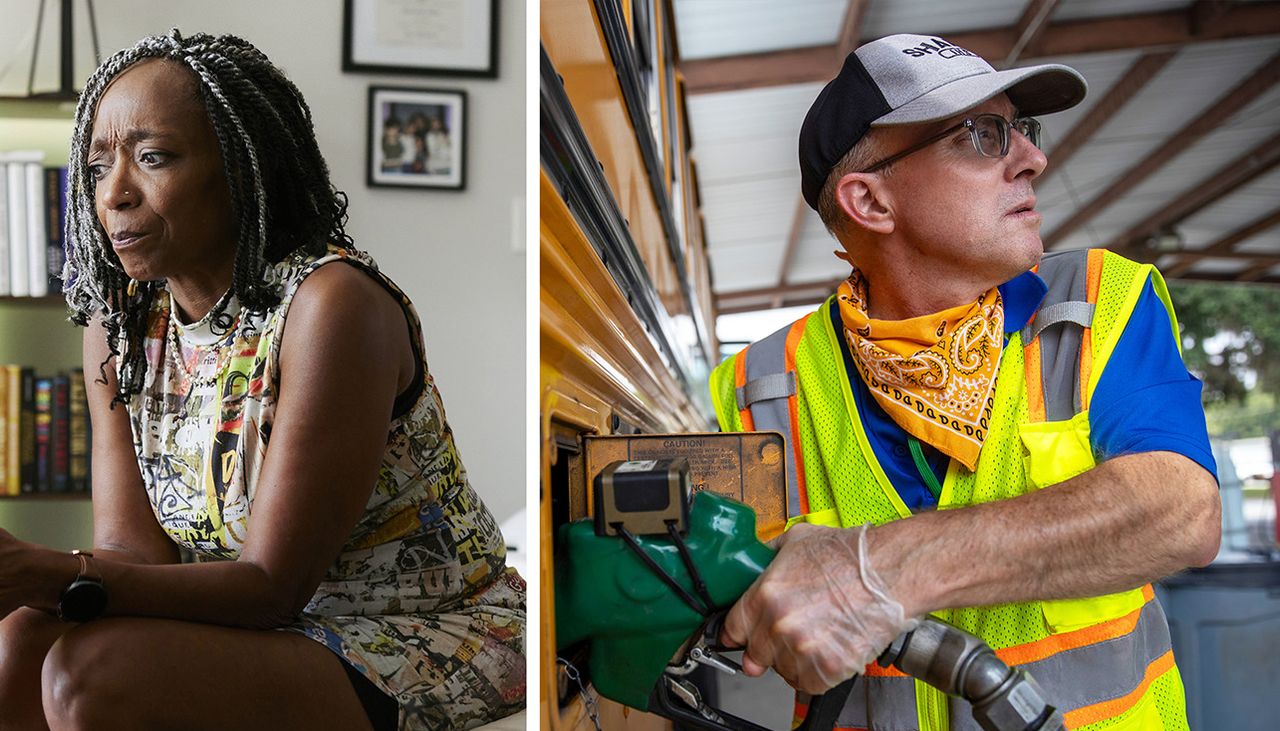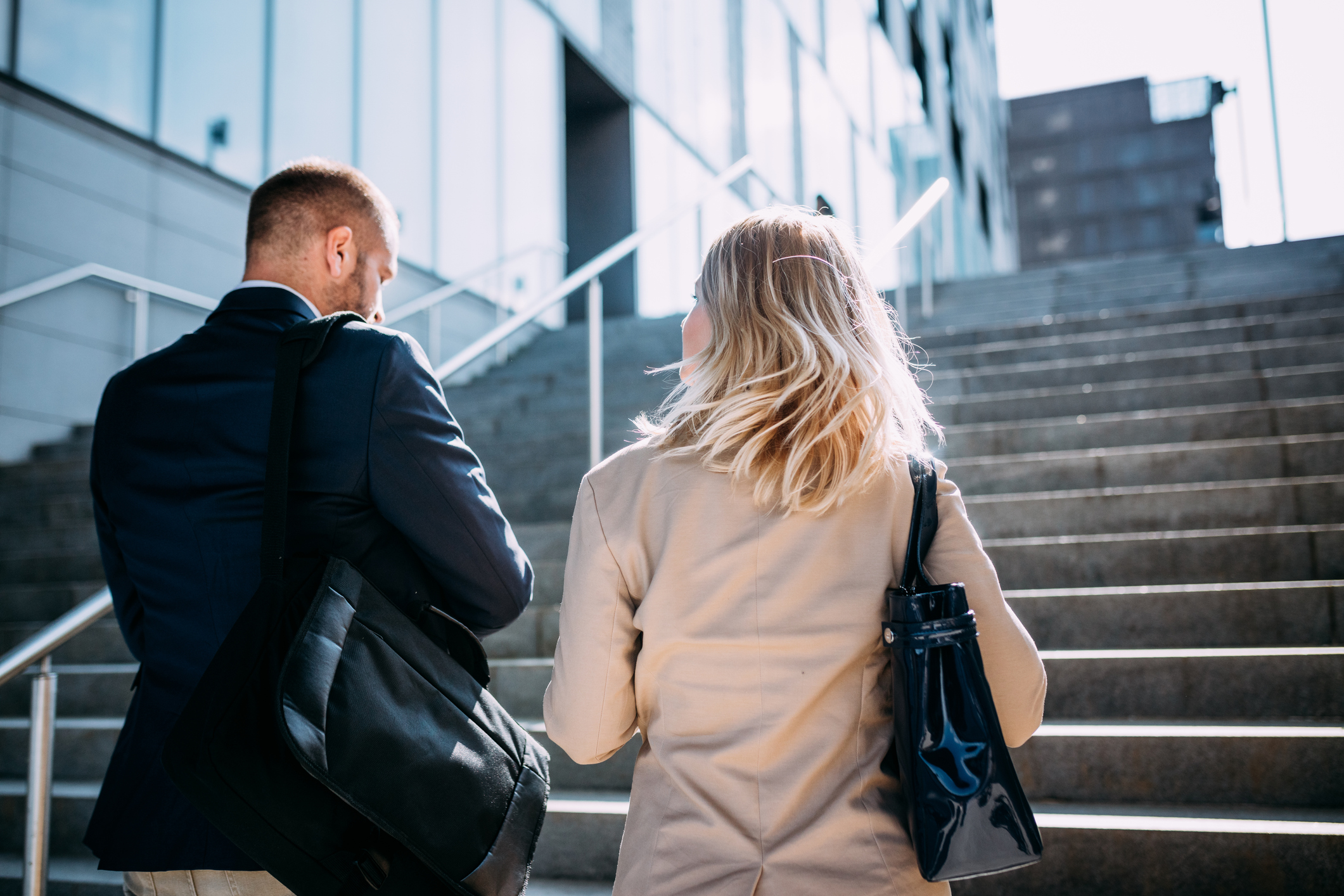The Gurus Who Say They Can Make Quiet Quitting Disappear—for $15,000 a Day
Some have Ivy League degrees, others have no degrees, but these workplace consultants all say they’ve got an antidote to the viral trend of employee disengagement
His name is Dean Lindsay, though that’s not what he goes by on LinkedIn. “Quiet Quitting Keynote Speaker” is this search-savvy consultant’s new moniker, and he says it’s helping him get hired—at $10,000 to $15,000 a day—by companies sweating the latest buzzy term for employee disengagement.
Mr. Lindsay, who has been advising businesses about corporate culture for two decades, says quiet quitting is closely related to burnout, work-life balance, stress management and other phenomena that came before. His prescriptions are largely the same, too.
When he saw the viral TikTok phrase had quickly migrated from social media to the C-suite, compelling many bosses to think about how to stop workers from checking out, he didn’t hesitate to rebrand, swapping out his name on LinkedIn for something catchy and of-the-moment.
“I just jumped on it,” he says.
If you’re running a company now, chances are your inbox is full of messages from experts claiming they can goose morale, foster connection, boost buy-in and make various other jargon-studded dreams come true. The people who claim to know the most about quiet quitting are real go-getters, it turns out.
The extent of the problem these consultants aim to solve, and whether it’s new, is debatable. Many of them say that’s beside the point. Getting people to care more deeply about their jobs and colleagues may be a perpetual corporate mission, but it’s an important one, the argument goes. So what if it took a meme to intensify the sense of urgency?
Some, like Mr. Lindsay, run rousing workshops full of motivational mnemonics. (It’s all about the six P’s of progress, he says: pleasure, peace of mind, profit, prestige, pain avoidance and power.)
Less experienced consultants advertise youth as an advantage, saying they can get through to millennials and Gen Z.
Still others offer to set up employee-driven charitable campaigns, using company dollars, to make people feel better about where they work.
Rising Team, a Palo Alto, Calif., startup that sells camaraderie-building software designed to reduce quitting (quiet or otherwise), just closed a second venture-capital round, bringing total investments to $6 million.
For human-resources leaders, the pitches can seem endless.
Priti Patel, chief people officer at G2, a technology marketplace, says she gets daily emails about solving burnout and quiet quitting.
“I don’t even count anymore,” she says.
While some solicitations strike her as gimmicky, Ms. Patel says she doesn’t roll her eyes at all of them. She landed her current position last year after first working with the company as an independent “conscious leadership” coach, which she describes as helping managers deepen their emotional intelligence.
Her take on quiet quitting is that it’s simply the notion of having boundaries at work— hardly new. Nevertheless, establishing the boundaries is a real challenge for managers and direct reports alike, she says, and sometimes an outsider can help set expectations that work for everyone.
Karyn Twaronite, Ernst & Young’s global diversity, equity and inclusion officer, adds that HR consultants can lend valuable perspectives if they represent the views of young people or others who are missing or rare in the executive ranks. EY uses a mix of internal and external advisers, she says, and conducts quarterly “pulse” surveys, asking whether employees feel that they belong at the firm—which last month started splitting its consulting and auditing businesses—and are free to be themselves.
“These feel like softer things, but we know that they’re critical because if people don’t feel this way, then they could, in theory, quit,” she says. “If a consultant can help leaders listen to their employees or decipher the data, that’s really important.”
Data is a main selling point for Rising Team, the venture-funded startup that Facebook, Google and Yahoo veteran Jennifer Dulski launched in 2020. (She says her business idea predates the pandemic, but “the timing turned out to be perfect.”) Her young company starts by polling a client’s staff to measure the likelihood they’ll stay, and says in a few months it can deliver a meaningful increase in the share who plan to stick around.
Ms. Dulski, who teaches management at Stanford Graduate School of Business, aims to get co-workers to know and like each other—and without resorting to hackneyed exercises like trust falls. Rising Team’s “kits,” as she calls the software, lead groups of employees through virtual or in-person discussions every six weeks or so. A kit for a 10-person team costs $99 a month, and companies with many teams can get discounts for buying in bulk.
The idea is that workers who are invested in their colleagues are less likely to slack off or leave.
Money helps, too, though raises and bonuses aren’t the only ways to promote loyalty and engagement, says Tess Murphy, director of strategic partnerships at Kiva, a microfinance nonprofit. Her pitch to companies is that they can pump up employee enthusiasm by letting every worker direct a small sum—as little as $50—to a favourite cause.
Kiva has managed these corporate programs for eight years, but the tumult of the past two has prompted more workers to consider whether they and their employers are making a difference in the world, Ms. Murphy says. Businesses, in turn, are grasping for initiatives that can give their people a sense of purpose.
Ms. Murphy says companies wonder, “ ‘How do we get them connected and excited about the work that we’re doing?’ ”
Much of their consternation centres on young workers who fixate on what is, or isn’t, in their job descriptions and put in too few hours for some of their older colleagues’ tastes, she says.
Appealing to executives who are confounded by their greenest employees, Adam Owens left a steady human-resources job and started his own consulting operation this year. He bills himself as an unconventional alternative to competitors with Ivy League M.B.A.s and decades of experience. If you’re a Boomer or Gen Xer trying to figure out Gen Zers, he says, hire someone like him, a former philosophy major who dropped out of college in the aughts and built a career without the typical credentials.
Many young workers aren’t unmotivated, he adds, but they don’t necessarily measure success like their predecessors or do what they’re supposed to do in the eyes of others. He aims to help bosses understand what these employees really care about.
“Millennials are uniquely positioned to deal with this challenge,” Mr. Owens says. “We function as a bridge between the other generations.”
 Copyright 2020, Dow Jones & Company, Inc. All Rights Reserved Worldwide. LEARN MORE
Copyright 2020, Dow Jones & Company, Inc. All Rights Reserved Worldwide. LEARN MORE
This stylish family home combines a classic palette and finishes with a flexible floorplan
Just 55 minutes from Sydney, make this your creative getaway located in the majestic Hawkesbury region.
The remote northern island wants more visitors: ‘It’s the rumbling before the herd is coming,’ one hotel manager says
As European hot spots become overcrowded , travellers are digging deeper to find those less-populated but still brag-worthy locations. Greenland, moving up the list, is bracing for its new popularity.
Aria Varasteh has been to 69 countries, including almost all of Europe. He now wants to visit more remote places and avoid spots swarmed by tourists—starting with Greenland.
“I want a taste of something different,” said the 34-year-old founder of a consulting firm serving clients in the Washington, D.C., area.
He originally planned to go to Nuuk, the island’s capital, this fall via out-of-the-way connections, given there wasn’t a nonstop flight from the U.S. But this month United Airlines announced a nonstop, four-hour flight from Newark Liberty International Airport in New Jersey to Nuuk. The route, beginning next summer, is a first for a U.S. airline, according to Greenland tourism officials.
It marks a significant milestone in the territory’s push for more international visitors. Airlines ran flights with a combined 55,000 seats to Greenland from April to August of this year, says Jens Lauridsen, chief executive officer of Greenland Airports. That figure will nearly double next year in the same period, he says, to about 105,000 seats.
The possible coming surge of travellers also presents a challenge for a vast island of 56,000 people as nearby destinations from Iceland to Spain grapple with the consequences of over tourism.
Greenlandic officials say they have watched closely and made deliberate efforts to slowly scale up their plans for visitors. An investment north of $700 million will yield three new airports, the first of which will open next month in Nuuk.
“It’s the rumbling before the herd is coming,” says Mads Mitchell, general manager of Hotel Nordbo, a 67-room property in Nuuk. The owner of his property is considering adding 50 more rooms to meet demand in the coming years.
Mitchell has recently met with travel agents from Brooklyn, N.Y., South Korea and China. He says he welcomes new tourists, but fears tourism will grow too quickly.
“Like in Barcelona, you get tired of tourists, because it’s too much and it pushes out the locals, that is my concern,” he says. “So it’s finding this balance of like showing the love for Greenland and showing the amazing possibilities, but not getting too much too fast.”
Greenland’s buildup
Greenland is an autonomous territory of Denmark more than three times the size of Texas. Tourists travel by boat or small aircraft when venturing to different regions—virtually no roads connect towns or settlements.
Greenland decided to invest in airport infrastructure in 2018 as part of an effort to expand tourism and its role in the economy, which is largely dependent on fishing and subsidies from Denmark. In the coming years, airports in Ilulissat and Qaqortoq, areas known for their scenic fjords, will open.
One narrow-body flight, like what United plans, will generate $200,000 in spending, including hotels, tours and other purchases, Lauridsen says. He calls it a “very significant economic impact.”
In 2023, foreign tourism brought a total of over $270 million to Greenland’s economy, according to Visit Greenland, the tourism and marketing arm owned by the government. Expedition cruises visit the territory, as well as adventure tours.
United will fly twice weekly to Nuuk on its 737 MAX 8, which will seat 166 passengers, starting in June .
“We look for new destinations, we look for hot destinations and destinations, most importantly, we can make money in,” Andrew Nocella , United’s chief commercial officer, said in the company’s earnings call earlier in October.
On the runway
Greenland has looked to nearby Iceland to learn from its experiences with tourism, says Air Greenland Group CEO Jacob Nitter Sørensen. Tiny Iceland still has about seven times the population of its western neighbour.
Nuuk’s new airport will become the new trans-Atlantic hub for Air Greenland, the national carrier. It flies to 14 airports and 46 heliports across the territory.
“Of course, there are discussions about avoiding mass tourism. But right now, I think there is a natural limit in terms of the receiving capacity,” Nitter says.
Air Greenland doesn’t fly nonstop from the U.S. because there isn’t currently enough space to accommodate all travellers in hotels, Nitter says. Air Greenland is building a new hotel in Ilulissat to increase capacity when the airport opens.
Nuuk has just over 550 hotel rooms, according to government documents. A tourism analysis published by Visit Greenland predicts there could be a shortage in rooms beginning in 2027. Most U.S. visitors will stay four to 10 nights, according to traveler sentiment data from Visit Greenland.
As travel picks up, visitors should expect more changes. Officials expect to pass new legislation that would further regulate tourism in time for the 2025 season. Rules on zoning would give local communities the power to limit tourism when needed, says Naaja H. Nathanielsen, minister for business, trade, raw materials, justice and gender equality.
Areas in a so-called red zone would ban tour operators. In northern Greenland, traditional hunting takes place at certain times of year and requires silence, which doesn’t work with cruise ships coming in, Nathanielsen says.
Part of the proposal would require tour operators to be locally based to ensure they pay taxes in Greenland and so that tourists receive local knowledge of the culture. Nathanielsen also plans to introduce a proposal to govern cruise tourism to ensure more travelers stay and eat locally, rather than just walk around for a few hours and grab a cup of coffee, she says.
Public sentiment has remained in favour of tourism as visitor arrivals have increased, Nathanielsen says.
—Roshan Fernandez contributed to this article.
This stylish family home combines a classic palette and finishes with a flexible floorplan
Just 55 minutes from Sydney, make this your creative getaway located in the majestic Hawkesbury region.






















